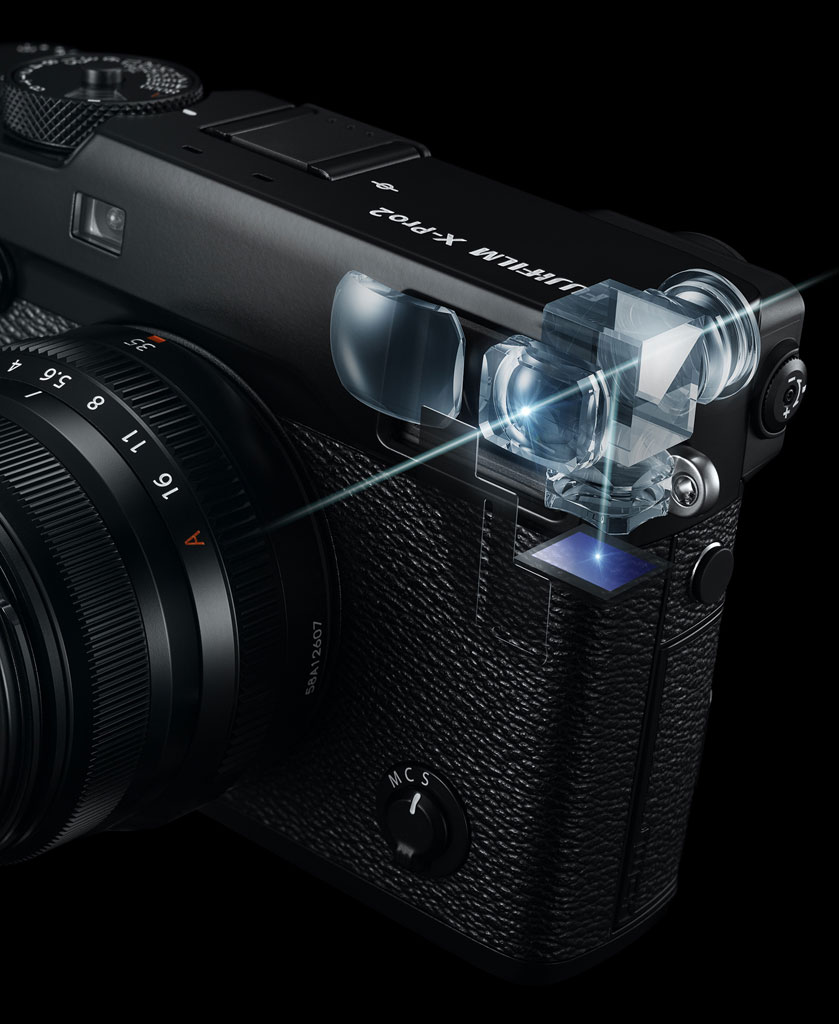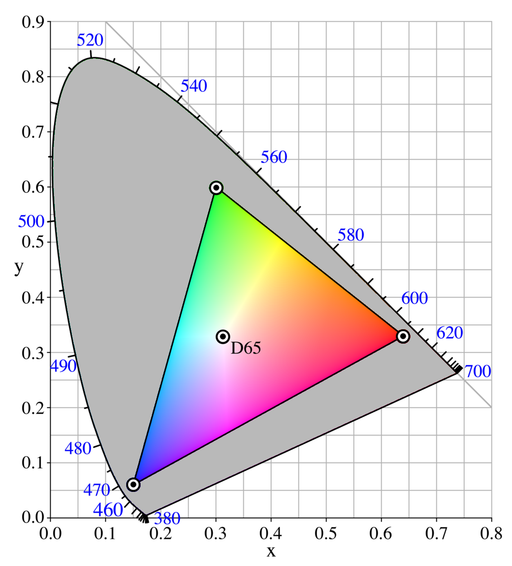Fujifilm Q&A @ CP+ 2016: Inside the X-Pro2, a leap forward in on-chip phase-detect, and why no 4K?
posted Monday, March 21, 2016 at 2:59 PM EDT

Imaging Resource founder and Publisher Dave Etchells had the opportunity to sit down with Toshihisa Iida and Makoto Oishi of Fujifilm Corporation's Optical Devices & Electronic Imaging Products Division (the division responsible for producing their cameras and lenses) at the CP+ 2016 show in Yokohama, Japan last month. Mr. Iida is the General Manager of the Sales & Marketing Group, while Mr. Oishi is involved with product marketing for the X-Series, within the Sales & Marketing Division. Topics of conversation included Fujifilm's X-series mirrorless cameras and how they've been received around the world, the challenges of 4K capture, the continued evolution of the company's clever Film Simulation modes, the new-and-improved hardware underlying the Fuji X-Pro2, a deep dive into the minutiae of on-chip phase-detect autofocus, and the company's plans for the X-series and its lens lineup going forwards.

General Manager, Sales & Marketing Group
Dave Etchells/Imaging Resource: To start out, the X-series seems like it's been a huge success for Fujifilm.
Toshihisa Iida/Fujifilm: Thank you.
DE: I think you probably spoke to this at the X-series event, but do you have any idea what your market share is in the mirrorless segment?
TI: I think the most accurate statistics are based on the CIPA statistics. So according to CIPA, I think our share is probably between 14% and 15% within mirrorless [by] value. The volume is lower, because of the...
DE: ...because of the higher-end products, yeah.
TI: Yeah. So 14-15%, that's global.
DE: And how does that break down by region? I know that mirrorless has always been more popular in Japan, but the premium products seem to be getting much more popular in the US now.
TI: If we looked at it regionally, probably the highest share for us is Asian countries. For example, in Thailand our share within mirrorless reached 40%.
DE: 40% in Thailand! Wow, what's so special about Thailand?
TI: Yes, yes, that's a good question.
DE: You need to figure that out, so you can make the same thing happen everywhere.
TI: Yes. In Thailand the size of the mirrorless market has already exceeded that of DSLR. So we exceeded the share of Canon...
DE: Wow!
TI: ...and became the number one within the whole category. I think it seems the young females started buying mirrorless cameras. The number one reason is because of the skin tone. So the selfies are very popular.
DE: Ah, selfies!
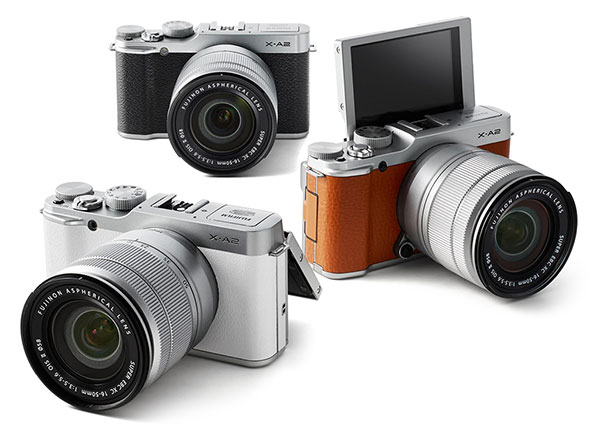
TI: So a camera like like our X-A2, it's not so popular in the Western countries. But the Thailand girls are just picking up our cameras, because the skin tone is very good.
DE: That's very interesting; it's the skin tone. It does a good job on the skin tone.
TI: Yes.
DE: How interesting. That had never occurred to me as being a market driver, but it makes sense.
TI: Because those girls are taking pictures with smartphones, and once they get to a certain point they want to buy a decent camera. That camera has to be the best, deliver the best skin tone, that's the whole reason they are buying a camera. So the big success for us, I think, is in Asia and Thailand, Malaysia. Japan is [also] a big market for the mirrorless, but it's a very competitive market. There, are all the manufacturers are pushing hard, so our share is a little bit lower there than the global average.
DE: That's very good. Boy, that's so interesting about Thailand, it's fascinating to me. It's a case where pure consumers are seeing a real difference in image quality, and that's affecting their product choices. I wonder if you can extend that into other parts of the world, too?
Actually, I was having a conversation with another company yesterday and was asking about mirrorless and the female market versus the large-sensor compacts. [Ed. Note: I'm talking here about cameras with 1-inch type sensors, like the Sony RX100 series, Canon G7X, and the recently-announced Nikon DL line.] And it was interesting; they said they felt that if people decided that they wanted to step up, they would go all the way to a mirrorless camera. So their sense was the large-sensor compacts were more for people who already had...
TI: Correct. For the second camera, yes.
DE: ...interchangeable-lens models and [needed] a pocket camera.
TI: Exactly, yes.
DE: That's very interesting. Do you find X-series interchangeable-lens users are also buying the X-series compacts?
TI: Yes, definitely.
DE: So there's definitely some brand loyalty there.
TI: Yes. So I was sitting in the booth and talking [with] a lot of the customers. So many customers, they're really interested in the Fuji X70 as a second camera or as a pocketable camera.
DE: Yeah, that looks like a very interesting unit. I think we just got our sample, but I hardly ever get to play with cameras anymore, by myself anyway.
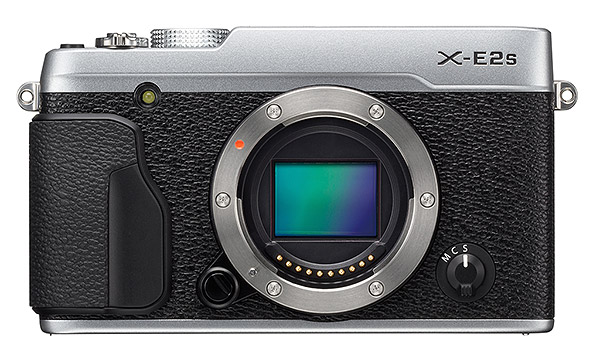
TI: Of course there's an argument whenever we introduce a new firmware upgrade that it's damaging the existing product. So there are pros and cons, but we decided that we really needed to take care of the existing customer first before thinking of the new customer. So I think by upgrading the firmware for X-E2, that would be more beneficial for our overall business and the customer will be happy. So I think that's right, to show our customer loyalty for their purchase.
DE: That's certainly a position that we support very strongly. I think that's a very important benefit with a manufacturer, that their products don't just quickly become obsolete.
TI: Yes. Because now the camera is costing somewhere around several hundred to a thousand dollars. So it's ridiculous for us to ask customers to upgrade every two years or so. So even three, four, five years; as long as possible. That's our job, to keep them usable and not obsolete. We want them to spend more money for lenses or accessories, and so on. That's more beneficial to the customers.
DE: So the happier they are with you, then they're going to continue to spend their money. They just won't be buying a camera every time there's a new model introduced.
TI: Yes. Spend money, but in a new way.
DE: That makes a lot of sense. What was the decision-making process in developing the X70? It's got a fixed lens and an APS-C sensor. It's sort of like a wider angle version of the X100T, but it's also much smaller. So the question one of our editors had was "Why not make an X100-series with a wider angle lens?" Was it just that you really felt you needed the smaller size?
TI: Of course, in our process there are discussions whether we just change the focal length of the X100-type camera. But we think that's the nature of the 28mm wide-angle, f/2.8. We think that camera is even better for street photography or snapshooting. And so we want to minimize the size of the camera. So the biggest part of this camera [gesturing to the X100T] is the viewfinder. And so you take the viewfinder away, but instead we want to keep more flexibility on the X70. So instead of the finder, we put the tilting screen and the touch panel. And we want to position this camera ... it's slightly different. It's not just the little brother of the X100-series. It has more of the character of street / snapshooting.
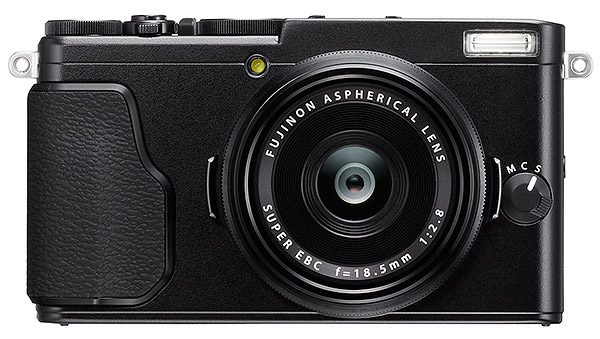
DE: So the size is very important.
TI: Yeah, the size is important.
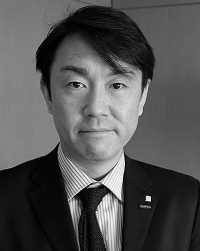
Sales & Marketing Division
Makoto Oishi/Fujifilm: This is the smallest X-series, right? So smallest with APS-C, and our image quality. So we eliminated the finder, of course. And also the lens, we decided it should be 28mm. So the 28mm can cover the whole need; from the landscape to maybe portrait, anything. That is why we decided to choose the 28mm.
DE: And is that an accessory lens you have on that one? [An X70 on the table in front of us had a large front-element adapter lens attached to it.]
TI: This is the wide-conversion lens that we are developing.
MO: [It will] convert to a 21mm-equivalent.
DE: It's still in development. Will you also do a tele-conversion?
TI: Probably not.
MO: Currently, no.
DE: Not for this camera. [picks up the X70] Oh, that's beautiful. Yeah, I love the cameras you guys make, just the build quality and the optics that you do is really good. From the beginning, you set out to establish a very premium kind of profile for the X-series. And at the time, I know a lot of people (myself included) were thinking, "Geez, why are they starting way up there in such a small part of the market?" But I think it's served you well, that your early direction established a sort of a benchmark of quality with the product line.
TI: Yes. So when we started the X series, we thought that it was a time to think about our legacy. Our legacy is the lens, and many Fujinon lenses are used by professional videographers or, you know, cinematographers. And our heart is image quality. So I think that was kind of the piece that helped in the making of the product. So the high-end strategy was a natural move for us.
DE: But you also have lower-end products that the girls in Thailand are buying, as well. You don't go real far down [into the entry-level portion of the market], though.
TI: About $550 as a price range, but bear in mind that was the price for Thailand. It's probably worth three months' salary or so [for customers in that market].
DE: Wow. And they're still buying them in huge quantities.
[Ed. Note: This is really incredible, that mass-market consumers are buying cameras that cost three months' salary!]
TI: Yes.
MO: And surprisingly, those who bought an X-E1, which sold very well, are now switching to X-T10. So the X-T10 is selling good in Thailand as well.
TI: So maybe the girls are deciding to take another step up.
DE: Yeah! I don't tend to think of the X-T10 as being aimed at the young female, "go to parties and clubs and take selfies" market. That's very interesting. So one of your core strengths, really, is color management. It's interesting to see that actually play out very explicitly, and that what many would tend to consider an unsophisticated consumer recognizes that.
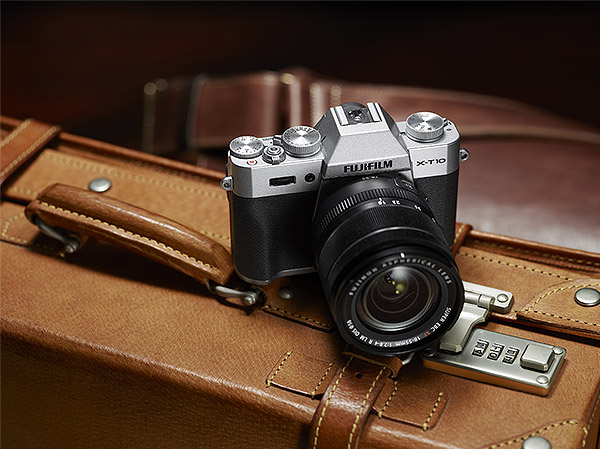
TI: Unsophisticated, maybe, but they cannot compromise on skin tone.
DE: Yes - they're very sophisticated about skin tone!
TI: Yes.
DE: So last year when I spoke with Oishi-san, you mentioned that the current X-Trans II sensor couldn't capture 4K, due to the 16 megapixel resolution, and the slower-than-necessary readout speed. So now with the X-Pro2, you have a higher resolution of 24 megapixels, X-Trans III, but still no 4K. Are you getting closer to having the readout speed for that, and is it then...?
TI: Actually, so other capabilities of the sensor and the processor....
MO: Are fast enough and powerful enough to do 4K movie.
DE: [So the hardware is already fast enough to capture] the 4K movie.
MO: Yes. So in terms of the sensor and the processor, no problem.
DE: So does that mean it could come as a firmware update? Or is it that there's a thermal limitation?
MO: I think that there's some limitation, because with a 4K movie, for example, we need to sort out heating issues also. So I cannot say it's impossible, but very difficult to put, you know, 4K capability into the X-Pro2. If we develop 4K movie-capable cameras, we will need to change the form factor.
DE: Yes, they would have to be bigger or something.
MO: Also, the X-Pro2 is primarily a still photographer's camera.
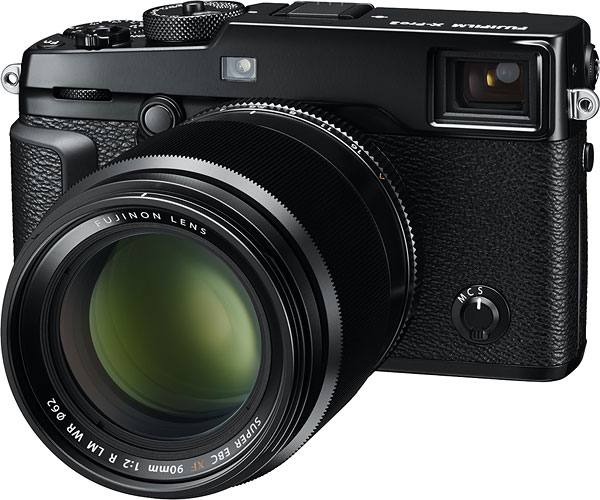
DE: It's good to hear that you actually have the technology now to be able to do 4K, even though I think that it's a check box for a lot of people. They're not necessarily shooting 4K, but they feel like they have to have a camera with that.
TI: Yeah, as a future-proof sort of choice.
DE: But I think that it does have some benefits even for still photographers though. I'm sure you're aware that Panasonic has promoted the idea of "4K Photo." I think that's a very strong use case.
[Ed. Note: 4K Photo is using 4K video for still photography. The idea is that you basically have an eight-megapixel camera with a continuous shooting speed of 24 or 30 frames/second. By making it easy to pick still frames out of the 4K video stream, 4K Photo capability enables a lot of interesting features.]
Your film simulation modes seem to be very popular even with many seasoned enthusiasts, including some of our staff who normally wouldn't care about filters. Do you plan to continue offering more variations of these going forward? Or how about the ability to let the users customize them?
TI: For example, you know, the black and white mode with the X-Pro2, we are introducing the new ACROS mode, monochrome mode. That is a more expanded expression of black and white. This could be done because of the new sensor and the new processor. Because the new sensor is a 24-megapixel and has fast [readout], and a powerful processor, that can do the more complicated processing. So the black and white...
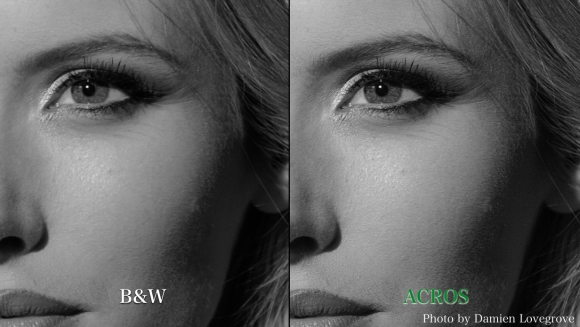
Image courtesy of Damien Lovegrove / Fujifilm.
DE: So the ACROS processing was actually more complicated than some of the color film simulation modes.
TI: Hmm -- yes, yes.
DE: Huh!

TI: So, I think you know, whenever we have a new device, whenever we find new room [Ed. Note: Presumably meaning processing power], we like to keep improving the film simulation modes. For example, because of the new sensor and processor, even Velvia mode is improved. So the new X-Pro2's Velvia mode is even better than other cameras' Velvia mode.
DE: Oh really?
TI: Yes! See if you take a picture of the red flower. The previous X-Pro1 is... The saturation is a little bit over-saturated. [shows an image of a very bright red flower, as rendered both by the previous Velvia mode and the new one.]
DE: Ah, on a red flower, yeah.
TI: Because the image taken has limited gamut, like sRGB.
Fuji3: This is the, you know, current...
TI: The current filter.
MO: The new one has more, you know...
TI: Color tonality.
DE: Can you toggle back and forth? [looking at the image on-screen]
TI: The saturation, yes.
DE: Ah yeah. There's much more shape in the very highly saturated red areas.
TI: Yes. More detail, more shape.
DE: This is very interesting. And so it's...
TI: No over-saturation.
DE: The color itself looks a little bit different. The old Velvia simulation is a little more reddish, and has a little bit more blue in it. I guess this is maybe how you get the shape, by backing off slightly on the red and taking out some of the blue cast?
TI: Yes. So if the color has a limitation, over limitation, so of course the color is changing to the more orange type or...
DE: Yeah, so you kind of rotate the color a little bit into an area where you have a little more gamut.
[Ed. Note: This gets into the deep weeds of color management a little, but the issue basically comes down to what you do when either your capture or display device runs out of color gamut. Once you've hit the limit of the most intense red it can reproduce, what do you do for even more intense reds?
Here, the issue isn't so much about what color the camera can capture, but how they display it in sRGB color space in their JPEG files. (You can of course convert images directly from the RAW format into AdobeRGB or other much broader-gamut color space, so the issue in this case is what to do about sRGB.)
The answer is that you have to play little tricks with the color, and that what you want isn't actually accurate color, but color that *looks* accurate and natural. It's as much art as science, and there are various strategies you can apply. One is to compress the color gamut at its edges, so an intense color is rendered less intense than it is in real life, allowing some room for there to still be variation between it and even more intense shades. Another trick can be to shift rendered hues slightly, into parts of the color space where you have more gamut available.
In the case of the Velvia simulation here, I was noticing that slightly purplish-looking reds were shifted slightly into more pure reds or even orange-reds, but the subtle shading of the flower petals was much better preserved as a result.]
TI: Yes. So we don't just introduce new simulations, but we also keep improving existing simulations.
DE: Yeah, I've actually been very impressed with those. I didn't really appreciate them until -- it might have been last year or two years ago here that we had an interview. You really showed me what they were doing in different parts of the spectrum with the different film simulations and how the images ended up looking. My sense is that the film simulation modes really suffer from a lack of awareness. I think a lot of people don't really know what they do or have a good sense for them.
TI: Yes, as you mentioned, we have much room to increase awareness of the film simulation mode. Probably old people still remember what Velvia, or Provia and Astia means, but you know, the younger generations don't. They even never used film, so we need to you know, not educate, but perhaps appeal more to the younger generation.
DE: Do you have any sense of how widely used, how many of your users are actually using the simulation modes? And is that rate different in Japan versus the US?
TI: I think, you know, for example, we conducted a photo contest, a competition to celebrate the X-series anniversary. We received over 3,000 submissions, so we have some kind of data of how many film simulation are actually uses versus raw processing.
DE: Oh, so it was not a photo contest about film simulation, it was just a photo contest.
TI: Yes. Then we can look at all the data...
DE: Very clever. So it was a way of sampling...yeah.
TI: So I think that it's different between the regions. Some countries, there's more JPEG film simulation, some countries, more raw processing. So that's kind of the study or survey.
DE: My sense in the US is that serious photographers tend to always want to shoot raw.
TI: Yeah.
DE: There's a bit of a feeling that "Oh, if you're not shooting raw then you're not really a serious photographer."
TI: But interestingly, there are more and more professional photographers, even professional photographers, who just go straight to the JPEG output.
DE: Yeah, because they don't have time on an assignment to come back and spend a couple hours on the computer, so the initial jpeg quality is important.
TI: Exactly.
DE: So the hybrid optical viewfinder that you have from the original X-Pro1, and now on the X-Pro2, is very unique, and you obviously spent a lot of effort on that. Can you explain what's new and improved? Your website says the information display is easier to see. How is that achieved?
TI: Between the X-Pro1 and the X-Pro2, we launched the X100T. The X100T has a good digital electronic rangefinder for the first time ever. Optical finders have good things and bad things about them, and electronic viewfinders have good things and bad things, I think. So we really wanted to pick up the good thing from both technologies, for example maintaining the clearness of the optical viewfinder. The down side is that you cannot check the exposure level or the focusing point, or white balance and so on. So we introduced the electronic rangefinder, which is as a small LCD panel. So you can check the images after you shoot. So before you're shooting, you can see the actual images you are taking. So that is the new hybrid viewfinder. So our challenge is that the X-Pro1 has magnification, a dual magnification depending on the lens. So this is a multi-view hybrid viewfinder. Now the X-Pro2 is an advanced hybrid multi viewfinder.
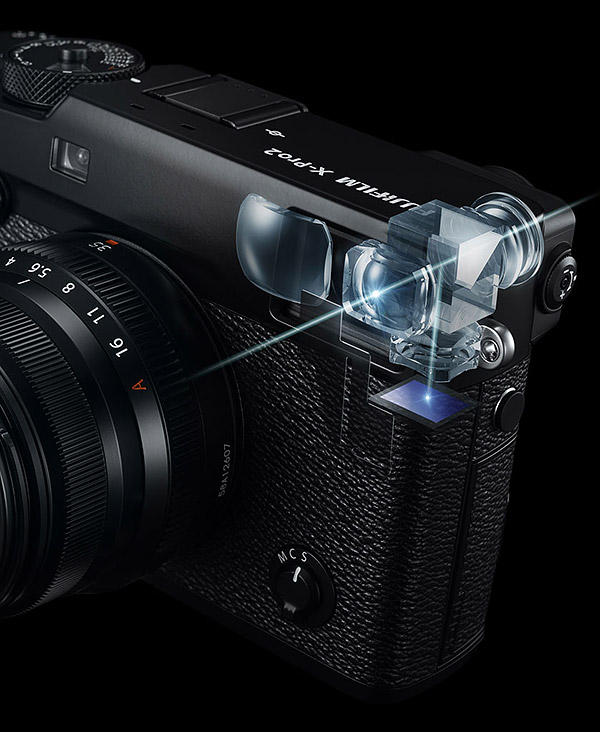
DE: Advanced hybrid multi-view.
TI: Yes. So the challenge is how we can do that without affecting the overall size and so on. The other challenge is a small challenge. It sounds like a small challenge, but it's a big challenge to the engineers, to design the diopter. So the initial X-Pro1 didn't get the diopter, but this new one has a diopter. So diopter, a new electronic range finder, and still keeping the multi-magnification.
Fuji3: All the work being that kind of optical design, so we put a new aspherical lens.
DE: Oh, and aspherical lens, yeah. But I thought even the original had an aspheric element, didn't it?
TI: It didn't..
DE: Oh, it's not, it wasn't aspheric? But I knew it was multi-element. It was a very sophisticated viewfinder optics. And I know that was one of it's key characteristics originally, was that its optical quality was very good.
MO: So especially this backside lens is actually aspherical lens. [pointing to the rearmost element in a diagram of the viewfinder's optical formula]
DE: Ah, I that's the eyepiece lens itself, basically.
MO: And the new prism is a high refractive index.
DE: Oh, high refractive index on the prism. That's interesting. So that allows you to make the prism smaller?
MO: Yeah.
DE: Very interesting.
TI: And also, you know, of course the electronic parts were upgraded. The LCD panel is upgraded from 1.44 to 2.36 million dots. So this is the actual inside of the viewfinder. [I think pointing to a diagram that I don't have to show here, sorry]
DE: Wow, I knew that was a particular feature with the X-Pro1, that the viewfinder was very high quality, very flat field, and had low chromatic aberration. And I could imagine that adding a diopter to that would be difficult, because all of a sudden there's something in the design that's variable and changing.
TI: Exactly, yes.
DE: I've seen that you also raised the eyepoint on this one. It seems like that's something that's difficult to do. I don't really know enough about optical design, but I know always like it with my eyeglasses, to have a high eyepoint.
TI: Yes.
DE: This is kind of a technical question about the card slots. With the X-Pro2's dual slots working in backup mode, do both cards get written to simultaneously? If so, does the fact that one slot supports UHS-II while the other is only UHS-I mean that buffer clearing to both can be throttled by a slower card, or is the backup function done in the background (ie. the cards aren't simultaneously mirrored)?
TI: If the other [UHS-I card] is using the buffer, as a backup, it doesn't mean slowing down.
DE: Ah, so it doesn't slow down UHS-II. It's just that one card will have copied all the buffer data first, before the other one has finished. Also, this is purely on the rumor side, but rumor has it that you used Sony for your fab, and that you're using copper wiring now on the new X-Pro sensor.
TI: Mmm-hmm.
DE: So it is copper?
TI: It is copper wiring, yes.
DE: But it's not back side illuminated. This is still a conventional...
TI: Still conventional, yes. No BSI.
DE: Is backside a possibility in the future? Is that something that's...
TI: I think it's technically possible. It used to be said that backside technology is good for the smaller sensor. So we are not quite sure how beneficial it would be for a bigger sensor. But if the benefit is strong enough, why not use it?
DE: Yeah. The smaller your pixel is, then the more overhead you have for all of the routing and circuitry and everything. So backside helps more with smaller pixels.
MO: And of course we have to care about sensitivity, because BSI allows higher sensitivity. But it also damages the capacity, right? I mean dynamic range.
DE: Oh, so you actually get more sensitive, but you don't have as much dynamic range with BSI? [Ed. Note: I hadn't been aware of this previously.]
MO: Right, to saturate. It's too high sensitivity.
DE: That's very interesting. I guess, thinking about it, there's certainly a trade-off between sensitivity and how much it takes to saturate the pixel's charge well.
MO: I think maybe backside structure is what we need, because [it allows] faster speed as a structure.
DE: I was just reading... There was a patent that we wrote an article about on our website a while back... was it [from] you guys? The organic resistive sensor technology?
[Ed. Note: We've actually covered this a couple of times, although we just realized that we missed publishing the more recent story once it had been edited. D'oh! It's live now and can be seen here, while the earlier article is here. Fuji has also partnered with Samsung to use organic tech in its ISOCELL phone sensors, which we've also reported upon here.]
MO: Organic resistance, yes.
DE: Yeah. That's something that you guys are doing.
MO: Yes.
DE: That's sounded very interesting. I mean, I'm sure it's very early days, but the idea...
MO: It's way too early [for any practical products to come from it].
DE: Yeah. But the idea that you can separate the light sensing and the charge storage is a very encouraging concept.
Moving on, earlier this month you announced a slight delay in the availability of the X-Pro2.
TI: We are very sorry to the customers, yes.
DE: Can you make any comment about the reason? Was that due to unexpected demand?
TI: Actually it's a combination between the higher demand and the [complexity of the manufacturing process].
DE: So bringing the manufacturing process up to speed.
TI: Yes. It could be faster, but it wasn't fast enough. So we delayed about two weeks.
DE: Two weeks from now it'll be shipping. That's very good. [Ed. Note: It's obviously shipping now, as we're finally publishing this interview.]
In February last year you showed an X-mount lens roadmap that included the XF 120mm f/2.8 Macro. Is that still on track to be released this year? And/or do you have an updated roadmap?
TI: At the moment, we are sticking to that roadmap, but we are always listening to what customers say, and what new lenses the customers demand. So we're consistently reviewing our roadmap. And as soon as we make a decision we will make it public.
DE: I'm curious, and I don't know if you can comment -- what kind of demands are you hearing from the customers? What are people asking for?
TI: Probably two demands. One is to cover longer telephoto. We introduced a 100-400mm, but many customers said they want a long telephoto prime. The second one is something like a 35mm f/2, a smaller prime lens, even though they can compromise a little bit on the aperture. For example, this is f/2 instead of f/1.4, but you know the form factor is much smaller. So the nature of the mirrorless customers is that they want to have a smaller lens and smaller form factor. So a small lens...
DE: ...along with the long tele, yeah. The long teles are hard for the manufacturer because they're very expensive to develop, an only marketable towards a very small number of people.
TI: Yes.
DE: It's also one of those things that kind of conveys a certain cachet to the line. The consumer perception is sort of "It really is a big professional line because now we have a 400mm."
At last year's CP+, you said that additional new technologies would be needed before there would be an X-Pro2. Now that the X-Pro2 is here, can you say more about what the technologies were that you were feeling you needed to develop?
TI: Simply the new sensor and the new processor.
MO: Last year I already knew about the new sensor, so that was why I used that kind of word.
DE: Aha, yes. So you weren't so much a fortune teller, you knew at the time that the new
MO: Yes. Last year we improved the X-T1 autofocus capability with a new firmware, 4.0. Things like zone focusing or wide tracking focusing, that's good for the moving subject. The X-Pro2 is a new chip that covers a much bigger area than the previous X-T1 -- 236% bigger.
TI: [shows a comparison] So this one's the old sensor, and this new one's bigger.
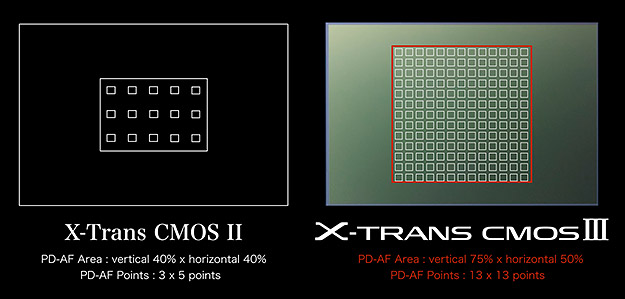
MO: So a bigger area, a wider area with many points. Also, the reading speed is fast. That is also improved, even the contrast.
DE: You improved the readout speed of the whole chip.
[Ed. Note: This is no doubt a result of the move to copper metallization.]
MO: Yes. And the sensitivity's higher than the previous sensor. So that change, the autofocus is faster and more accurate. So we handed almost a hundred professional photographers early samples. The number one feedback was for focus accuracy improvement. Particularly for when you get a dark scene. So it's now EV...
TI: Minus two.
DE: So not necessarily that it would be... Well, you said the readout speed is faster, so it could be a faster autofocus, but you're also able to track subjects better because you have more area to follow them?
TI: Yes.
DE: ...and then the AF sensitivity is improved. That sounds very significant. I'm curious does the phase-detect and contrast-detect work in kind of a hybrid mode?
TI: Hmm-mm.
DE: Yeah. So it's like phase-detect gets you close, and then contrast-detect fine tunes? Or is it...
TI: Actually, the priority is phase-detection, we always use only phase-detection. But sometimes the phase-detection doesn't work, so we change to the contrast autofocus.
DE: Oh, okay.
MO: For example, if the aperture is brought to the... You know.
DE: Yeah, small aperture...
MO: Small apertures, it switches to the contrast detect.
TI: No phase-difference anymore, right.
DE: Yeah, and possibly in very low light, the contrast. That's interesting that the phase-detect takes you all the way to the final focus point. I had heard that the reason some of Canon's cameras, like the EOS M-series were slower autofocusing was because they would do phase-detect, then also had a contrast-detect cycle [to fine-tune at the end].
TI: Exactly, a combination.
DE: There's a combination. It's like you get close with phase...
MO: ...and then there's a fine tuning done.
DE: That sounds very good, that you can go all the way to final focus in most conditions with just phase-detect. What's the primary challenge in incorporating phase-detect pixels onto a sensor? Does it change the circuitry significantly so you need to be able to read out the focus pixels separately? Or is that just another aspect of CMOS, that you have kind of a random-access ability on readout?
TI: I think the real challenge is minimizing the effect on the image quality.
DE: Image quality. Because some of the pixels are shaded, and so you have to compensate.
MO: Yeah. Sometimes we can use the phase-detection pixels themselves, but sometimes we cannot use it. It's out of focus, so we compensate.
DE: Ah - I hadn't stopped to think about that. So when it's in focus, you can use the phase-detect focus pixels as imaging pixels, but when you're out of focus, you can't.
MO: Because the phase is different.
DE: Yeah, the phase is different. Oh.
[Ed. Note: This was very interesting; kind of a face-palm moment for me. The whole idea with phase-detect autofocus is that light rays coming from different parts of the lens are out of phase with each other. This means that light corresponding to the same part of an out of focus subject, coming through the opposite sides of the lens is actually striking the sensor in different places. Only when the subject is in focus does the light passing through different parts of the lens actually end up in the same place. So when something is in focus, all you need to be concerned with is compensating for brightness with the phase-detect pixels, because the phase-detect pixels are shaded, so they only see the light coming from one side of the lens. But when an object is out of focus, the amount of light seen by phase-detect pixels may have no relationship to the amount of light seen by their neighbors, so they'd appear as bright or dark spots in the image. In those situations, the image processor has to estimate the correct brightness (and color) for the phase-detect pixels by looking at the normal pixels surrounding them.]
MO: So that [is the challenge]. For the center area it's easier, but if you go to the edge area, yeah, it's more challenging because of the light...
DE: The maximum possible acceptance angle is smaller near the edges, and much more of the light will be coming from one side of the lens vs the other. Yeah.
MO: Yes. So technically, it's easy to put a phase-detection [sensor in] this area, but you know, the challenge is how to minimize that affecting the image quality...
DE: Yeah. So that actually requires quite sophisticated processing. I'd never thought about that, and so I thought it was just a matter of doing like a nearest neighbor substitution or something. But you have to be sensitive to what the phase actually is, and then change your processing to match.
TI: It also depends on the subject's frequency. Like a higher frequency is more difficult. So we use the phase-detection pixel.
DE: Yeah, but when it has lower frequency detail, it's easier. Yeah.
[Ed. Note: I think what he's saying here is that when the subject has high-frequency, finer detail, it's harder to avoid artifacts from the phase-detect pixels, so in those cases they need to use data from the phase-detect pixels themselves. It seems to me that this would only be an issue when the subject was in focus or very nearly in focus, in which case the light would be in-phase between the PD pixels and normal ones. I'm not 100% sure that that's the correct interpretation of what he was saying, though, so apologies for the ambiguity.]
This may also be in the press materials, but you mentioned that you clock things off the sensor faster. What is the autofocus cycle time?
TI: Yes.
DE: What is that frequency, and how does it compare to X-Pro1?
TI: It is faster and faster. It is simply the readout speed, up to the analog sensors, readout speed.
MO: The reading speed is actually 3.6 times.
DE: Wow, 3.6 times faster readout!
[Ed. note: It turns out that the X-Pro2 clocks out the data for contrast-detect focusing at 384 frames/second!]
TI: Yes. So 3.6 times more chances to get tracking data.
DE: So that many more chances that you can take another look and correct. So your tracking must have improved significantly then. Can phase-detect be used during video recording also, or not?
MO: Yes.
DE: Oh, that's very good. This is the first X-Trans III sensor, that's in this camera, correct?
TI: Yes.
DE: We just talked about the readout speed, but what are the primary differences compared to the previous generation?
TI: Obviously more megapixels, and better signal to noise ratio, and readout speed because of the copper process. Also, the bigger phase-detection area, the coverage.
DE: What led to the better signal to noise ratio? Is that a consequence of using copper? You can make the lines narrower, so you have...?
TI: Yes. Much lower resistance.
MO: And we can optimize the optics.
DE: Oh, so your microlens is more efficient at collecting light.
MO: Directly to the photodiode.
MO: And also all the data transfer is faster. That means less resistance, means less noise.
DE: So less resistance. It's basically a lower-impedance readout, so you get better noise levels. Very interesting. I think we're pretty much to the end finally. My last question is just to ask how you would describe your strategy for the X series? How do you evolve it from here strategically? Where are you going with it?
TI: I think our past five years have been very satisfactory. So now we have a brand new sensor and a brand new processor. And to look back five years, the technologies are a little bit premature, the sensor technology and the processor technologies. [Ed. Note: I'm not sure, but it seems he was saying that their X-Trans and processor technologies weren't as developed as they would have liked them to be, when they first brought the products to market.] Now we have a brand new sensor and processor and you know, the gap between the SLR and the mirrorless, is almost zero. Even the mirrorless has started exceeding in some ways [what SLRs can do], in addition to what mirrorless already has got. So I think this leads to a turning point for the whole industry, not only Fuji. So we just think we'll continue our current strategy. The first thing is the inside of the cameras. All of the digital technologies keep evolving or keep innovating, but we never forget the heart or soul of photography. So the shooting style, or the finder, or the design, that kind of thing we need to keep as our DNA. At the end of the day, the image quality is everything. Like today I picked up the example from Thailand, the ultimate objective of why customers are still buying cameras instead of using phones. It's our image quality, and Fuji is a very large company, with 80 years history of looking after image quality. So it's image quality and the heart of the photography, and the technology innovation. Three major things we keep focusing on.
DE: And now that you've really, as you say, closed the gap with SLRs, that will make a difference maybe in how you bring it to market too, and how you'll be able to shift marketing, focus more on pro applications, or...
TI: Yes. As I said, the high end strategy is our core strategy. But like in Thailand, it doesn't mean that we'll only have the high end.
DE: Indeed. Well, I think that's all my questions. Thanks very much for your time!
• • •
[This article was included in our IR Newsletter, sent every two weeks and packed full of the most interesting and most popular content that we post on the site. Click here to sign up and get the best of IR delivered free, straight to your inbox!]


Fujifilm General Manager
Sales & Marketing Group
